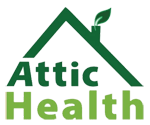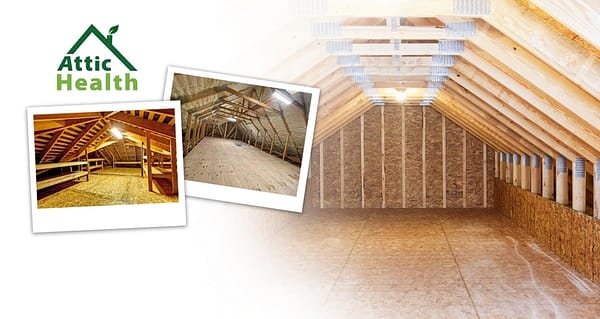Attic Safety Mean – Pest & Attic Mold Removal
Homeownership comes with various issues, along with many home maintenance professionals with digital content aimed at your attention! All these professionals want to tell you what issues cannot be missed and discuss attic safety. We have taken the time to organize all the real threats coming from your attic that impact your health or the health of your home’s structure.
How Do I Know If My Attic Is Safe?
Your attic, unless thoughtfully remodelled into a functional living space, is not suitable for casual use. The attic should be considered off-limits for children, pets, and guests. Those armed with proper knowledge of the attic dangers, or homeowners, should feel confident in their attics. Homeowners should also know if there is asbestos or exposed insulation in their attic.
If at any point, you feel uneasy about attic safety, it’s prudent to refrain from entry and seek professional assistance for attic-related concerns.
General Attic Safety Precautions for Attic Access
Prior to entering your attic, make certain you are equipped with the necessary attic safety gear to safeguard yourself. Take a moment to meticulously assess the potential hazards your attic might conceal, such as electrical wires, air pollutants, attic mold, pests, structural deterioration, and other general attic safety concerns. Your confidence in navigating this space is vital, but be ever cautious, ensuring you only touch the wooden beams to prevent inadvertent falls through the ceiling drywall.
Attic Safety Hazards and Threats
In the attic, we can find everything that has been neglected, and we do not mean just storage. From pests to attic mold and to other risks to your health, but also dangers to the home value as these threats can impact structure.
Moisture can be one of the largest risks to the structure of your home. If there’s moisture in your attic, this may cause it to smell musty; but beyond that, this moisture could weaken the structural integrity of your home. If you know you may have moisture issues, please read the section below about Wood Rot. In short, if your attic is free of all of these signs of hazards, it is probably safe to begin a self-guided inspection.
Keep an open mind that any evidence pointing to a risk will instantly change the safety status. Also, make sure to avoid any moving parts from the HVAC, whole house fan systems, can lighting, low rafters, ventilation systems, and wires that can be obstacles to movement in the attic.
Attic Mold and Pests Threats to Your Attic Safety
Other major issues to consider are the more health-focused, but first physical attic safety must be kept in mind at all times. Pests that often make it into the attic can be dangerous, but their waste and remains can cause health risks. Look out for dangerous pests such as racoons, squirrels, rodents and spiders! If the smell is really bad, you might want to consider a full retreat to safety.
Attic Mold and other growths can negatively impact the air quality, but also just like the waste of pests, it can be very harmful to your health. If your attic is free from moisture, pests, pest waste, smells of mold or other musty smells, or other general hazards, you can assume it is safe. If you find anything that worries you or creates additional concerns, you should call an attic mold removal professional.
Previous Moisture Issues that Result in Attic Mold Growth
Attic Mold in your attic is not just 1 problem. Attic Mold growth means there is an issue in the balance of your attic’s homeostasis that causes moisture to develop and over time manifests into Attic Mold that now needs to be removed. Attic Mold can cause your attic to be unsafe due to the air being filled with Attic Mold spores. In addition to the Attic Mold problem, you will need to uncover the source of the moisture build-up.
It is possibly near the Attic Mold formation that surfaces can be slippery or fragile due to wood rot or other decay such as dry rot. If you need help with attic mold testing, remediation or reconstruction you can still call us! We have a parent company with 20 years of experience handling all these specialized services!
Does Wood Rot need to be Replaced?
If you already know that the attic has been exposed to a large amount of moisture, you will want to test the stability of the space. If wood is left damp, it can easily lead to wood rot. Once you have a case of wood rot, this means, that whatever joists, rafter or any other attic wooden cross members will need to be replaced. This work can be costly and difficult to perform, so we often suggest regular attic and crawl space inspections.
Pest and Attic Mold Removal
So many pests target the attic as the space to set up their home! This is very frustrating for new homeowners, but prevention is the answer. We previously wrote an extended article to discuss how to keep pests out of the home FOREVER. No real surprises are contained in this article other than consistency.
The only solution to keeping the pests out forever is adopting a zero-tolerance policy. This means, taking action at the first site of any pest in or around your home. Pests are not displaced animals, they are an active parasite to the value, health, and longevity of your home.
How Often Should You Inspect Your Attic?
As you read before, attics are filled with everything that has been neglected. Still, an attic typically undergoes an inspection once a year at most, and sometimes even less frequently. Most guidelines suggest conducting attic safety inspections every six months, once in the springtime and once after the cold of the winter season. If you are in need of an attic inspection, we do these for free for our new customers and we warranty our work for 2 years!


